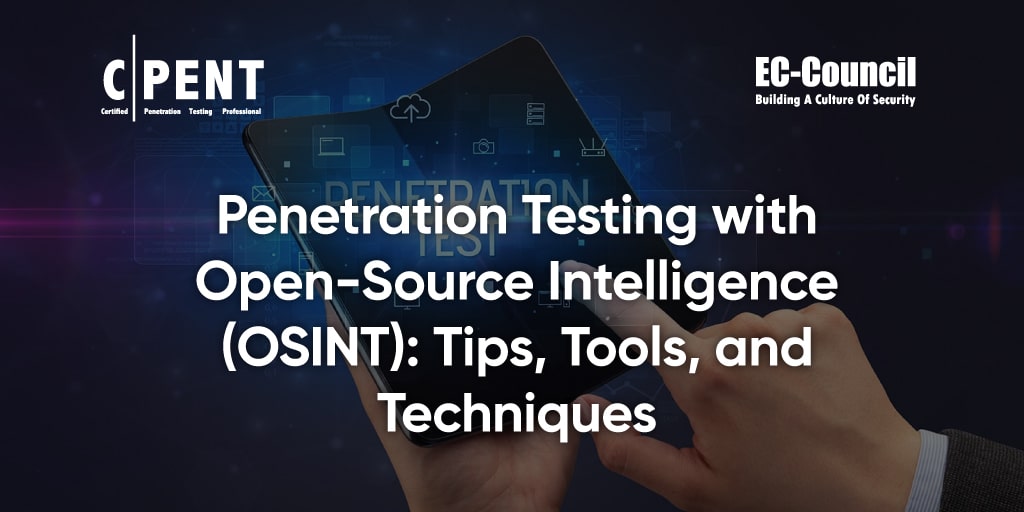According to a 2021 IBM report, the average organization did not detect a data breach for up to 212 days—and then did not fully contain the issue for another 75. In many instances, malicious hackers attack a company using publicly available information: open-source intelligence, often referred to as OSINT.
However, penetration testers can also use OSINT to protect organizations. This guide discusses what OSINT is and explains how penetration testers can apply OSINT tools and frameworks to improve an organization’s security.
What Is Open-Source Intelligence, and How Is It Used?
Cyberattackers usually start by profiling the organization or individual they’re looking to attack. Attackers can use publicly available data on the internet to locate exploitable targets with the objective of collecting as much data as possible about the individual or organization. Likewise, ethical hackers and penetration testers can use OSINT to identify a company’s vulnerabilities so that they can be fixed before malicious actors find them.
OSINT is raw data that is openly available to the public. It may include information like names, addresses, interests, and other personal details. Location and behavioral data, affiliations, and daily patterns are all important pieces of information that can provide an inside look into a target’s life.
Social Media Intelligence (SOCMINT)
Social media intelligence, known as SOCMINT, is a subcategory of OSINT. SOCMINT refers to publicly available information on social media websites.
One aspect of an OSINT-based penetration testing framework is the use of social media for reconnaissance. Most employees have social media accounts, which can give hackers access to a wealth of sensitive information. Penetration testing with SOCMINT can locate information such as:
- Social media posts, messages, and images
- Person-to-person communications
- Group-to-group communications
How Do Penetration Testers Find Information?
Cybersecurity professionals perform penetration testing using OSINT as a proactive measure to protect organizations. Using publicly available information, the tester can determine which areas are open to exploits. Once they have this data, they can then implement appropriate measures to prevent an attack.
Penetration testers gather OSINT in various ways. One method is to manually view content posted in specific groups or on certain pages. Another approach is to review results from searches the tester has performed. Testers may also find information by extracting data from websites using web scraping tools.
A variety of tools have been developed to automate tasks for penetration testers, improving efficiency compared with manual testing. These automated testing tools can also be used to find items that manual testing doesn’t identify. Penetration testers have many OSINT tools available to collect information (Nordine, 2017).
- Google dorks. One of the most popular OSINT tools is Google dorks. Google dorking is the technique of using Google search operators to find sensitive information and vulnerabilities.
- Metagoofil. Metagoofil is an OSINT tool that scans Google and Bing for email addresses. Testers use it to find people’s contact information, collect it in a list, and save that list as a CSV file.
- Recon-ng. Recon-ng is a framework to automate intelligence gathering that supports several data sources. Recon-ng provides five data sources: Google, Bing, Maltego CE, ShodanHQ, and Dnsdumpster.
- SpiderFoot. SpiderFoot scans over 100 data sources to locate information about a target. The tool can find information such as IP addresses, domain names, and emails.
Why Pursue a Career in Penetration Testing?
Recent data from Cybersecurity Ventures indicates that cybersecurity professionals are in high demand, with the cybersecurity job market expected to grow 350% by 2025 (Morgan, 2022). If you’re interested in obtaining one of these in-demand positions, consider getting certified with EC-Council as a Certified Penetration Testing Professional (CPENTAI). In the comprehensive, hands-on CPENTAI program, you’ll take a deep dive into how to use OSINT in penetration testing. You’ll also cover many of the other most-desired skills for penetration testers today, including:- How to penetration test Internet of Things (IoT) devices
- How to use social engineering tactics in a penetration test
- How to conduct penetration testing in the cloud
References
IBM. (2021). Cost of a data breach report 2021. https://www.ibm.com/downloads/cas/OJDVQGRY
Morgan, S. (2022, February 23). Cybersecurity jobs report: 3.5 million openings in 2025. Cybercrime Magazine. https://cybersecurityventures.com/jobs/
Nordine, J. (2017). OSINT framework. https://osintframework.com/









